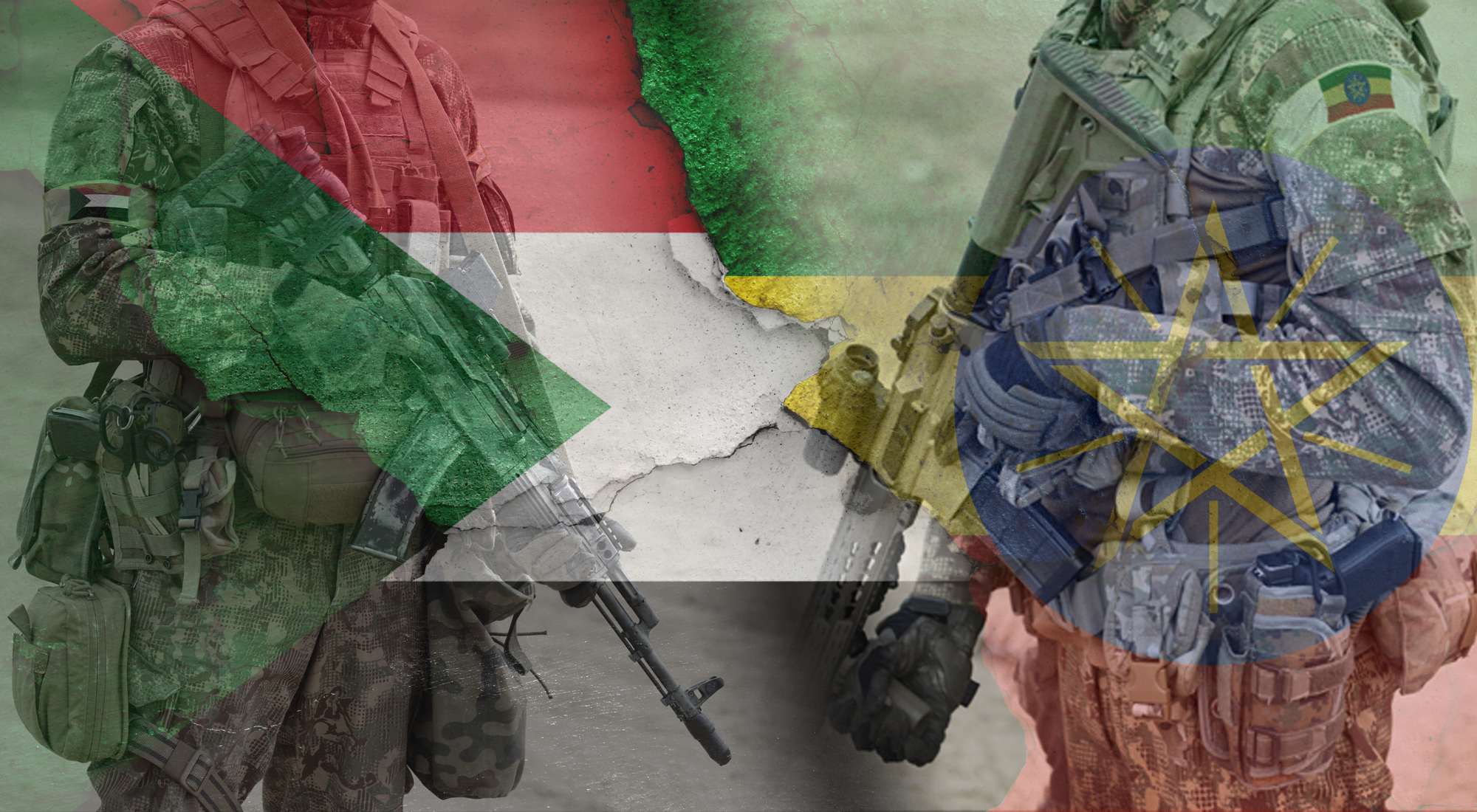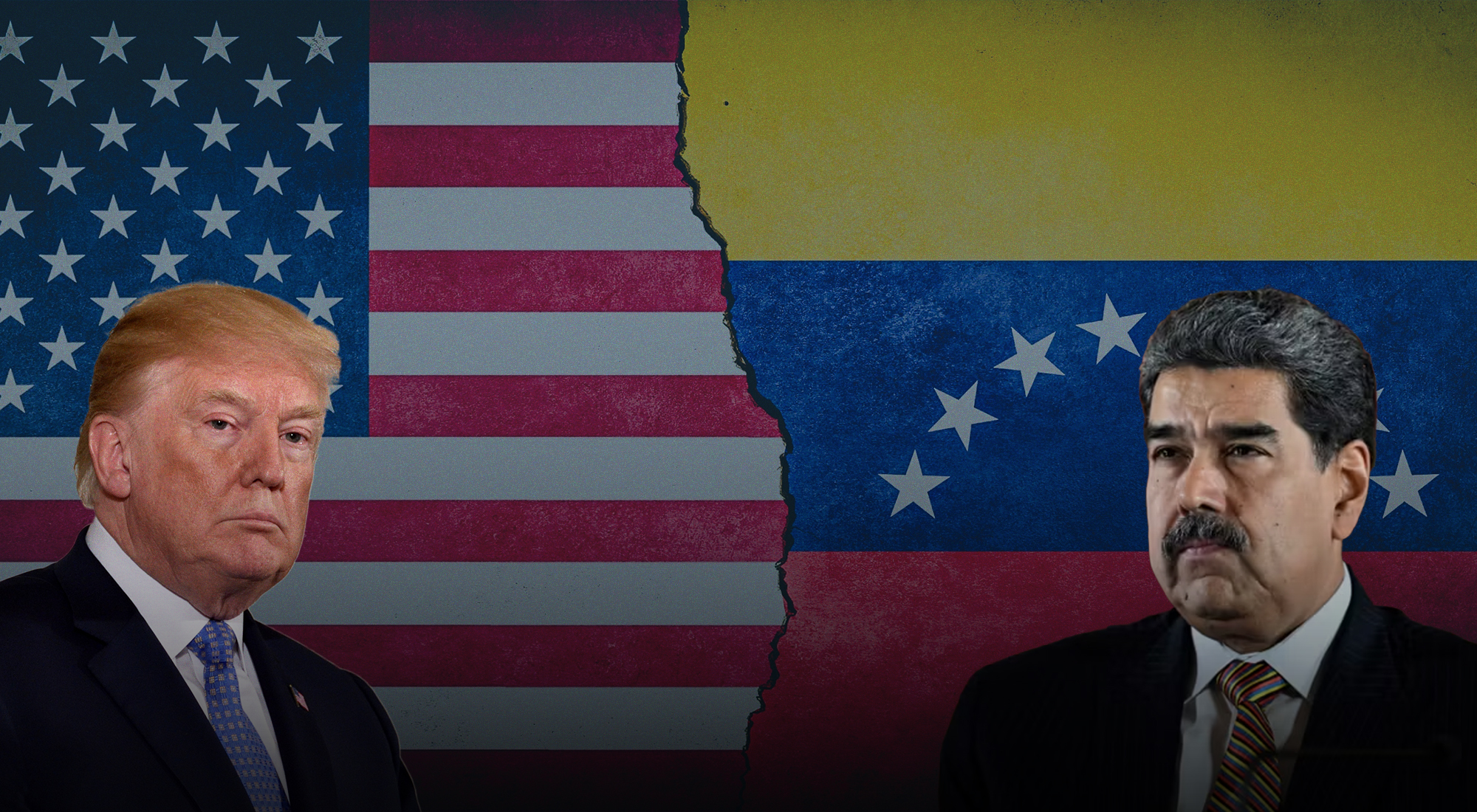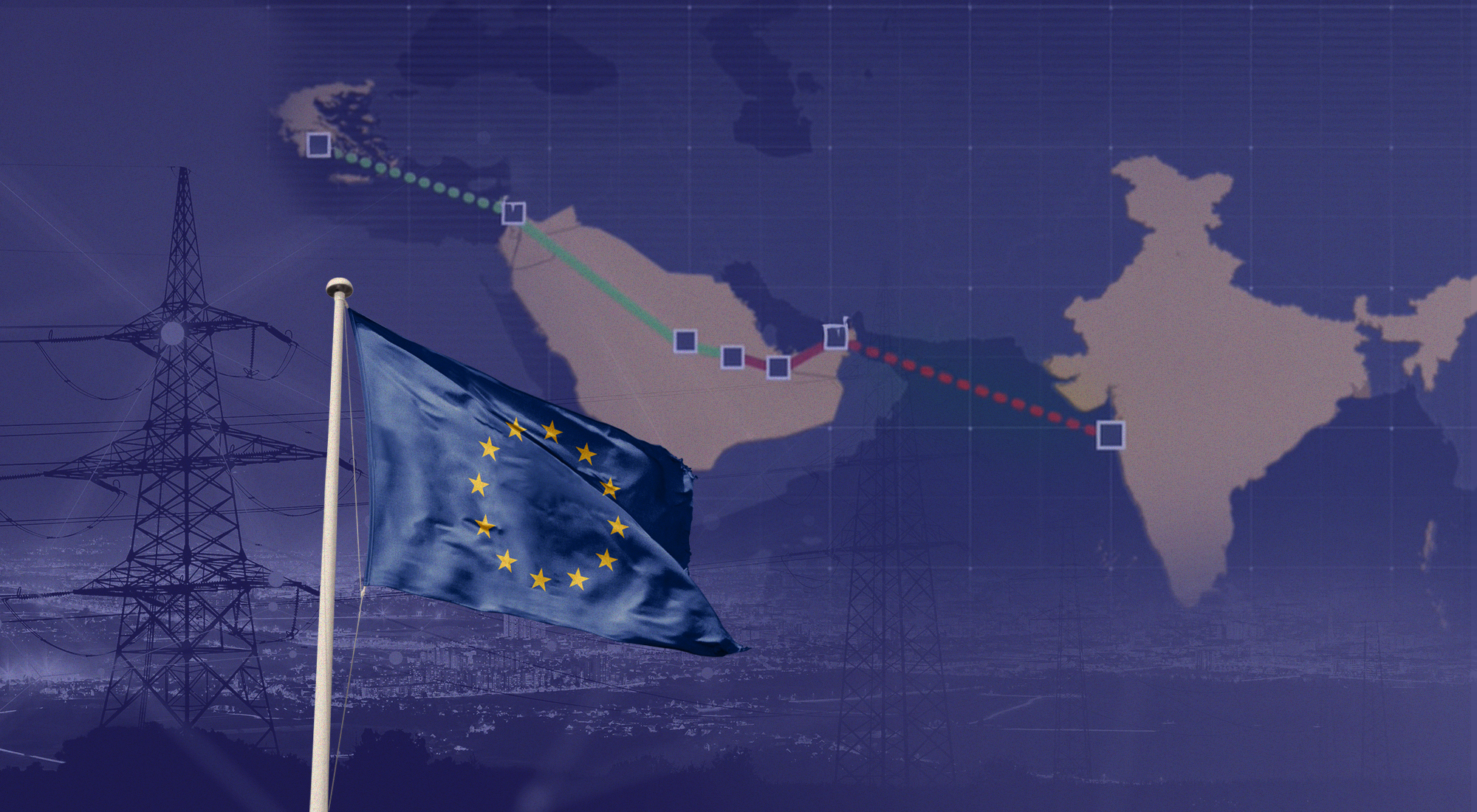The al-Fashaga border region is a powder keg threatening to blow. Its combination of border disputes with ethnic tension and resource nationalism means al-Fashaga is very likely to become the next source of regional instability in the Horn of Africa. This breadbasket lies at the crossroads of Sudan, Ethiopia, and Eritrea and is where the Ethiopian state of Amhara meets the Sudanese region of Gedaref. Disputed between Sudan and Ethiopia for decades, the outbreak of conflict in Ethiopia’s Tigray region coupled with ongoing domestic instability in Sudan threaten to spill into an ethno-nationalist border war between the two states. This article defines the underlying causes of the turmoil, analyzes the dynamics leading to conflict, and highlights likely scenarios. These include an increasingly distinctive feature of conflicts in the Horn of Africa: the intertwining of local and regional dimensions. In short, an outbreak of armed conflict in al-Fashaga will draw in neighboring, regional states with an interest in affecting outcomes – in support of either Sudan or Ethiopia. The roles these states may play – and the likelihood of a prolonged conflict – may result in major shifts in the distributions of power that will affect the region for years to come.
As Ethiopia descended into civil war in 2020, Sudan authorities swiftly took control of the disputed al-Fashaga border region by deploying troops. Ethiopia responded by sending military contingents to confront Sudan. In the ensuing months, Sudanese and Ethiopian soldiers have died and civilians have been abducted as both states attempt to gain the advantage by encouraging their populations to resettle in al-Fashaga. In early 2021, for instance, tens of thousands of Ethiopians fleeing conflict in Tigray are estimated to have been resettled in the region to bolster Ethiopia’s claim.[1] What seems to be a localized conflict between Sudan and Ethiopia is far from the truth. Rather, the conflict over this geostrategic region, watered as it is by many rivers and with the dispute over Ethiopia’s dam on the Blue Nile in the background, has the potential to set the region on fire, bringing in powerful external states such as China and the U.S. in the process. This analysis is, therefore, timely and prescient as it defines the underlying causes of the turmoil, analyzes the conflict’s dynamics, and highlights likely scenarios. These importantly include an increasingly distinctive feature across the Horn of Africa’s various conflicts: the intertwining of local, regional and international dimensions.
- The roots of the al-Fashaga dispute
The al-Fashaga (Arabic: الفشقة; also spelled al-Fashaqa, al-Fushqa or al-Fashqa) dispute’s roots date back to the beginning of the 20th Century. Al-Fashaga is a 260 km2 extended border area at the intersection Eritrea, the Ethiopian regional state of Amhara and the Sudanese region of Gedaref. It was London (as the colonial power in the so-called Anglo-Egyptian Sudan) and the Ethiopian Negus, or Emperor, Menelik II (1889-1913) that determined the almost 800 km long borderline between 1902 and 1907. The decision to run the border eastward in what was an underexplored region (for the British) resulted in the same vague border interpretations that continue to bedevil other such agreements reached in the Horn of Africa, such as the Ethio-Somali border region known as the Haud, or Hawd.[2]
Despite the less-than-concrete nature of the border arrangements, the dispute was localized for decades, punctuated by low-intensity, low-frequency clashes between various communities inhabiting the region. After Sudan’s independence from Britain, Khartoum’s leadership and that of Ethiopian Emperor Haile Selassie (1930-1974) addressed the dispute diplomatically during the 1960s. Efforts at dialogue disappeared following the 1974 Ethiopian revolution and the overthrow of Haile Selassie in favor of a Marxist dictatorship known as the Derg.[3] At this point, the dispute acquired more relevance domestically in both Sudan and Ethiopia, but remained marginal to the political dynamics of the region. The border was a flashpoint but no direct clashes were reported, albeit the number of Ethiopian paramilitary units in the region increased. Local communities, for example, established these units for self-protection and in support of their land claims. These groups were often involved in small clashes with Sudanese security forces. After the fall of the Derg and the coup d’etat in Sudan that brought Omar al-Bashir (1993-2019) to power, both states again attempted negotiations to resolve the issue in the late 1990s. Much of the impetus from the Ethiopian side came from its conflict with a newly independent Eritrea in 1998. Nevertheless, it soon became clear that al-Fashaga was too challenging to solve easily.
Perhaps the biggest obstacle is the fact that the region belongs de jure to Sudan, but de facto Ethiopia has a powerful claim on account of the large number of Ethiopians there. Most of the crop harvesting in al-Fashaga and related economic activities are carried out by Ethiopian families who claim to have lived on the land for generations.[4]
A breakthrough of sorts occurred with the so-called 2008 compromise. Ethiopia’s cooperative approach was predicated on Addis Ababa’s desire to gain Khartoum’s support for the Cooperation Framework Agreement (CFA) drawn up within the framework of the Nile Basin Initiative (NBI). The CFA outlines principles, rights and obligations for cooperative management and development of the Nile Basin water resources, particularly the building of dams, which Ethiopia was keen to do on the Blue Nile.[5] The resulting compromise affirmed Ethiopia’s recognition of the boundary delimited in 1907. In return, Sudan offered the possibility for Ethiopian communities to continue residing and farming in the region. The compromise also provided a “soft” interpretation of the delimited border that allowed the semi-nomadic livelihoods of many communities to continue.[6] In the years that followed, however, thousands of Ethiopians took advantage of the soft border and moved to al-Fashaga in search of work and fertile land.
- Conflict dynamics and their triggers
Changing internal, political dynamics in Ethiopia represent the most critical variable influencing the renewal of conflict in al-Fashaga. The election of Prime Minister Abiy Ahmed in 2018, for instance, led to significant breaks within the political hierarchy that had ruled the country since the overthrow of the Menghistu’s regime in 1991. This was engendered by a reshuffling of the ethnic balances within Ethiopian government institutions and the sidelining of the formerly ascendant Tigrayan ethnic elite in favor of ethnic Amhara factions.[7] Given that Ethiopia’s Amhara regional state borders al-Fashaga, the control of the region is of great importance. This has grown in importance as Ethiopia’s population has skyrocketed from less than 50 million in 1990 to over 115 million in 2020, with over 20 million in Amhara state alone.[8] Control of increasingly scarce land resources and the ability to sustain livelihoods have thus become prescient. Accordingly, many in Amhara have denounced the 2008 compromise, judging it illegitimate because it was concluded during the rule of Prime Minister Meles Zenawi, an ethnic Tigray who oversaw a Tigrayan-dominated federal government.[9] This anti-Tigrayan stance coupled with the renewed importance of al-Fashaga dovetailed with the outbreak of the Tigray crisis, shattering the fragile stability of the border region. Sudan’s leaders, in turn, used civil conflict in Ethiopia to strengthen Sudan’s claims to al-Fashaga.
Sudan’s leaders used the pretext of a visit by Prime Minister Abiy Ahmed to the head of the Sovereignty Council of Sudan (SCS), General Abdel Fattah Al-Burhan, to effect such a change. This occurred after the Ethiopian National Defense Forces (ENDF) were ordered by Addis Ababa to intervene in Tigray, and several Amhara State Regional Army battalions were deployed away from al-Fashaga to join the ENDF. Abiy requested Sudanese assistance to secure its own border with Ethiopia’s Tigray state, a request readily accepted by Al-Burhan. Khartoum quickly deployed more than 6,000 soldiers to the disputed area.[10] The troops, mostly composed of the Sudan Armed Forces (SAF) and the paramilitary reservists of the SAF, succeeded in taking control of areas inhabited by Ethiopians for years in just a few weeks. In response, Addis Ababa redeployed elements of the ENDF together with some Amhara militias along the border. Further, Addis Ababa increased support for Ethiopian paramilitary groups active in the area.
- Local and regional tensions
The dispute pitting Sudan against Ethiopia has assumed an ominous, new dimension in recent months, as a combination of structural and circumstantial factors conspired to regionalize the crisis. This has occurred as Sudan and Ethiopia’s two main regional partners, Egypt, and Eritrea respectively, have increased their involvement. Indeed, Khartoum has reported sporadic incursions by the Eritrean Defense Forces (EDF) into al-Fashaga and other Sudan-Eritrea border areas since January 2021.[11] Eritrea’s ruler, President Isaias Afwerki (1993-present), has put aside 30 years of enmity and allied his country with Ethiopia against the Tigrayans. The EDF now has its headquarters on Ethiopian soil, in Humera, in western Tigray state.
Al-Burhan and his military clique in Khartoum, for their part, have aligned with Egypt. The long-standing ties between the Sudanese Armed Forces (SAF) and the Egyptian military provided the groundwork, and a military cooperation agreement was signed in early 2021.[12] This was further accelerated when Al-Burhan dissolved the civilian-military transition government and assumed full powers in October 2021, a move which received the endorsement of Egypt’s president, Abdel Fattah Al-Sisi. The closer military and political cooperation between Cairo and Khartoum against Ethiopia has had the effect of linking the al-Fashaga dispute with that of the Grand Ethiopian Renaissance Dam (GERD), currently being built on the Blue Nile in Benishangul-Gumuz, a state adjacent to Amhara. Any diminishment in the Nile’s flow for Egypt has been construed as an existential threat. Khartoum, previously neutral on the issue of the dam, has increasingly adopted Egypt’s view.[13] The prolonged stalemate in negotiations over the GERD, internal instability in all three states, and the dam’s successive filling stages, all contribute to raised tensions. The result is that the GERD now pits Egypt and Sudan firmly against Ethiopia with al-Fashaga adding further fuel to the fire.
The circumstantial factors listed above have been twinned with structural factors. The first dynamic concerns the intertwining of local disputes and regional rivalries, which have shaped the politico-military alignments among regional states. A domestic crisis in one state such as Ethiopia may have deep implications for a neighboring country such as Sudan. Similarly, a dispute between two, regional states may spread to adjoining states due to socio-economic ties and political alignments, thus generating instability throughout the region.[14]
Mutual destabilization activities form the second dynamic. Realist theory holds that states may seek to undermine a rival’s domestic stability to gain power in direct proportion to a rival’s loss of power. This undermining may occur in the form of support to opposition or insurgent groups. Ethiopia and Sudan, for instance, both accuse each other of supporting non-state armed actors operating in their respective territories. Addis Ababa has accused Khartoum and Cairo of supporting Gumuz rebels who are active near the GERD in Benishangul-Gumuz state.[15] Sudan has pointed the finger at Ethiopia for its purported support of the Sudan People’s Liberation Movement/Army-North (SPLM/A-N), a rebel faction operating in the Blue Nile area.[16] Although the group signed a peace agreement with the Sudanese transitional government, some fringe groups of the movement still promote the armed struggle.
- A dearth of good options
As the number of regional states and proxy forces involved in the al-Fashaga dispute grows, and domestic instability increases, a wider conflict becomes increasingly likely. It is the specter of domestic conflict in both Sudan and Ethiopia that may have the greatest impact, however. Both Al-Burhan and Abiy are leaders whose actions have divided their respective countries, and both may look to conflict with each other’s state to reunite their polities. Indeed, their backgrounds heavily influence the way they see al-Fashaga. Al-Burhan, for example, is a native of Sudan’s Gedaref region, where the al-Fashaga region is located. He is also known as a hardliner within the SAF. Al-Burhan and factions close to him in the SAF may therefore exploit the border dispute and clash with Ethiopian troops for personal reasons and as a call against further dismemberment of Sudan – an emotive issue that may quell opposition protests currently ongoing. Lastly, Sudan (with Egypt) may ratchet up tensions in al-Fashaga to increase the pressure on Addis Ababa, which is still engaged in heavy fighting in Tigray. Egypt and Sudan may hope that by prolonging the conflict, Ethiopia will weaken and the GERD’s filling will somehow be delayed or suspended altogether.
Ethiopia, under Abiy, also has domestic and regional political motivations for adopting an intransigent stance over al-Fashaga. Abiy is reliant, to a large degree, on his military and political allies from Amhara state. Amhara regional authorities take a hard line towards Sudan. Their stance is partly due to the presence of Ethiopian-Amhara communities in al-Fashaga, and partly because of their ambition to regain control over what they view as historically Amhara land. That Abiy has chosen to prioritize conflict with Tigray and adopt a passive approach in al-Fashaga – despite Sudan’s militarization of the region – has led to disappointment and unrest. As such, much will depend on the evolution of Ethiopia’s internal conflicts. If Abiy pays more attention to al-Fashaga, it may appease the Amhara, but it runs the risk of sparking a war with Sudan and prolonging the conflict in Tigray state. Should the Tigrayans again achieve military success, as they did in mid-2021, there is an increased risk of a wider civil war in Ethiopia. This would play directly into the hands of Al-Burhan and Sudan, allowing them to consolidate Khartoum’s control over al-Fashaga by successfully countering the diminished Ethiopian paramilitary groups. Conversely, if the ENDF achieves a significant victory against Tigrayan forces, Abiy will have the political capital to refocus on both al-Fashaga and the GERD, thus appeasing his Amhara constituents by confronting both Sudan and Egypt.
The steps leaders take in Addis Ababa and Khartoum over al-Fashaga in the coming weeks and months will further affect the fragile equilibrium in the wider Horn of Africa region. Al-Fashaga has already drawn in armed groups from Sudan, Ethiopia, and Eritrea – along with significant military support for Sudan from Egypt. Given that the issue is increasingly linked to the GERD dispute necessarily anticipates Egyptian action. Looking for a convenient scapegoat to remove unwanted scrutiny on regime actions may eventually tip the balance in favor of conflict in al-Fashaga.
References
[1] Dahir, Abdi Latif, “In Sudan Border Town, Desperate Ethiopians Find ‘Second Mother Country’,” The New York Times. September 21, 2021, https://www.nytimes.com/2021/02/13/world/africa/ethiopia-conflict-sudan-refugees.html.
[2] Wondwosen, Teshome, “Colonial Boundaries of Africa: The Case of Ethiopia’s boundary with Sudan,” Ege Academic Review, vol. 9, no. 1 (2009), pp. 337-367.
[3] Puddu, Luca, “Border Diplomacy and State-building in North-western Ethiopia, c. 1965-1977,” Journal of East African Studies, vol. 11, no. 2 (2017), pp. 230-248.
[4] Wubneh, Mulatu, “This Land is My Land: The Ethio-Sudan Boundary and the Need to Rectify Arbitrary Colonial Boundaries,” Journal of Contemporary African Studies, vol. 33, no. 4 (2015), pp. 441-466.
[5] NBI (Nile Basin Initiative) (2020), Our Nile-Our Benefits, https://nilebasin.org/index.php/documents-publications/92-our-nile-our-benefits/file.
[6] Belete, Belachew Yihun, “Setit-Humera: A Blister on Ethio–Sudanese Boundary Disputation,” Journal of Borderlands Studies, vol. 31, no. 1 (2016):1-16.
[7] Casola, Camillo, “Eritrea in Tigray: Settling Old Scores?” ISPI, January 31, 2021, https://www.ispionline.it/en/pubblicazione/eritrea-tigray-settling-old-scores-29026.
[8] Tronvoll, Kjetil, “Ethiopia’s Tigray War Is Fueling Amhara Expansionism,” Foreign Policy, April 28, 2021, https://foreignpolicy.com/2021/04/28/ethiopia-tigray-war-amhara-abiy-ahmed-expansionism/.
[9] De Waal, Alex, “Viewpoint: Why Ethiopia and Sudan have fallen out over al-Fashaga,” BBC News, January 3, 2021, https://www.bbc.com/news/world-africa-55476831.
[10] AfricaNews, “Sudanese army deployed along the disputed border with Ethiopia,” Africa News, December 15, 2020, https://www.africanews.com/2021/12/15/sudanese-army-deployed-along-the-disputed-border-with-ethiopia/.
[11] Reuters, “Sudan and Ethiopia trade accusations in border conflict,” Reuters, February 20, 2021, https://www.reuters.com/article/us-sudan-ethiopia-idUSKBN2AK0LE.
[12] Abu Zaid, Mohammed, “Egypt, Sudan to strengthen military pact,” Arab News, March 2, 2021, https://www.arabnews.com/node/1818626/middle-east.
[13] Ana Hattia, and Saleh, Mona, “The Political Deadlock on the Grand Ethiopian Renaissance Dam,” GIGA Focus Afrika, no. 4 (2021), https://www.giga-hamburg.de/en/publications/giga-focus/the-political-deadlock-on-the-grand-ethiopian-renaissance-dam.
[14] Bereketeab, Redie. The Horn of Africa: Intra-State and Inter-State Conflicts and Security (London: Pluto Press, 2013).
[15] Etefa, Tsega, “What’s causing the violence in western Ethiopia,” The Conversation, March 16, 2021, https://theconversation.com/whats-causing-the-violence-in-western-ethiopia-156970.
[16] Hendawi, Hamza, “Sudan accuses Ethiopia of providing weapons to rebel groups,” The National, March 8, 2021, https://www.thenationalnews.com/world/africa/sudan-accuses-ethiopia-of-providing-weapons-to-rebel-groups-1.1180583.








